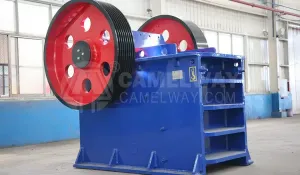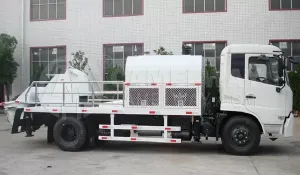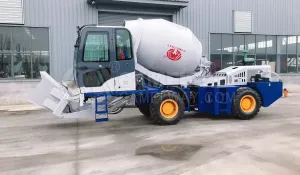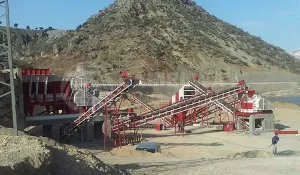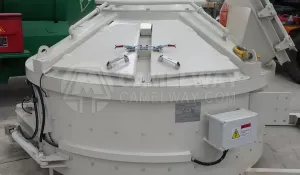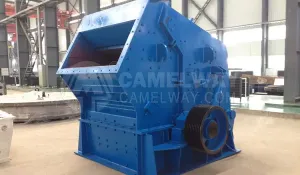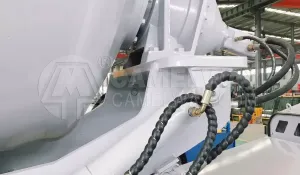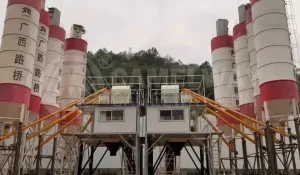One complaint we’ve heard from concrete plant buyers is that there is no single source of information about how to go about setting up shop. From surveying your market to selecting a location, obtaining permits, and deciding on which kind of plant to buy, there are hundreds of decisions to be made. Fortunately, the major steps can be boiled down to the following list of seven items. Some business, some technical, and all very important to your success. Often it is considerably less expensive to purchase a new concrete plant over a used concrete plant. Used plants almost never have the idea combination of sizing and options that perfectly matches what the concrete batch plant buyer wants or really needs.
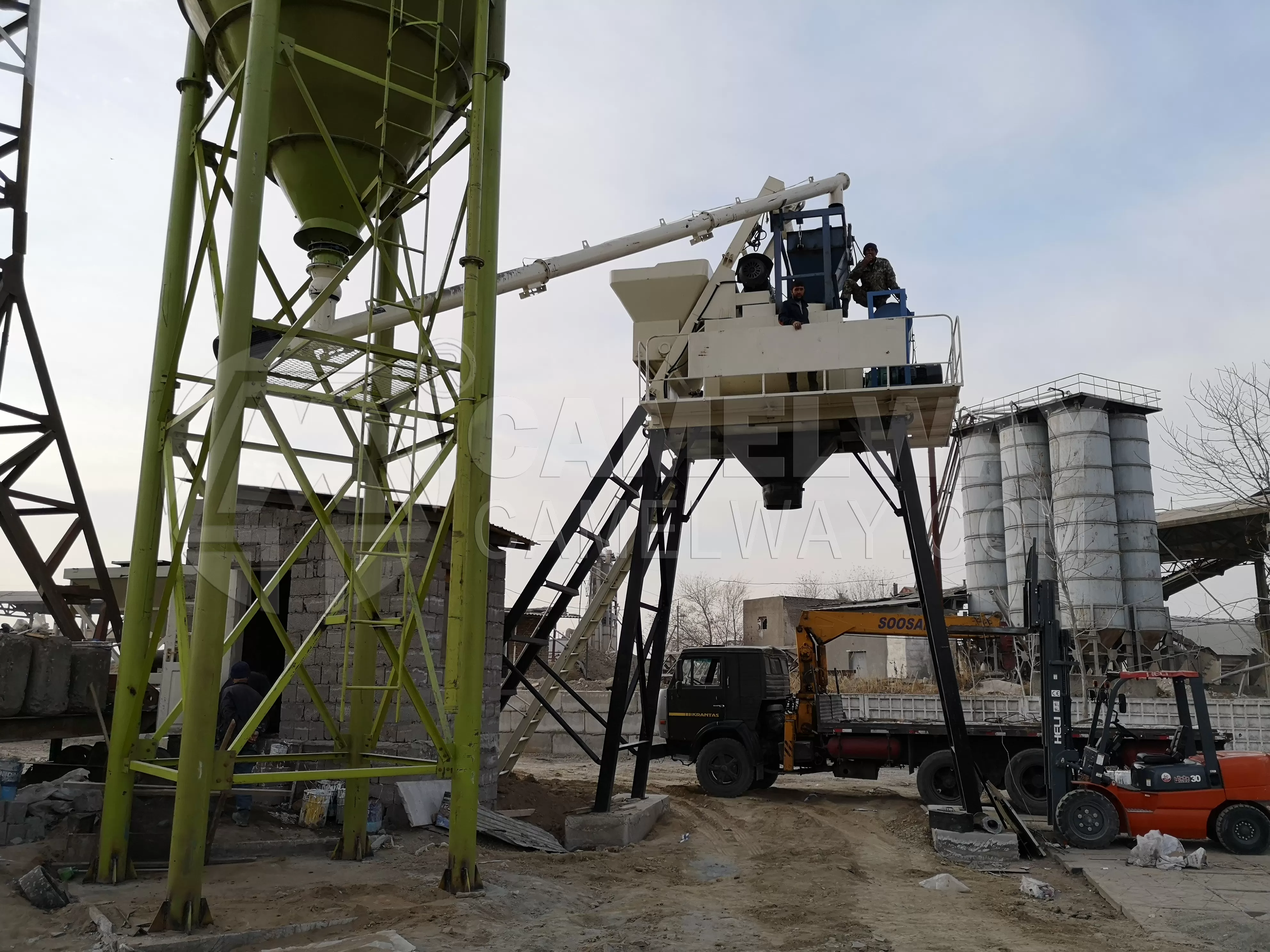
Define your market.
Is your market residential, commercial, highway, precast? Is it urban or rural? Rural markets will typically be served best by a dry batch plant. Urban markets, on the other hand, almost always demand a central mix for quality and consistency. (Civil engineers are very particular about what gets pumped up their high rise.) Your truck fleet will depend on your market definition. For example, four-yard mixers may be needed for residential pours, whereas 10 –11 yard trucks are standard for larger jobs.
Be certain your local market can absorb more concrete production capacity. In some areas, competition among large producers can lower the price per yard to the point that it is difficult for a small producer to survive. This is particularly true when the larger producer has its own source for raw materials.
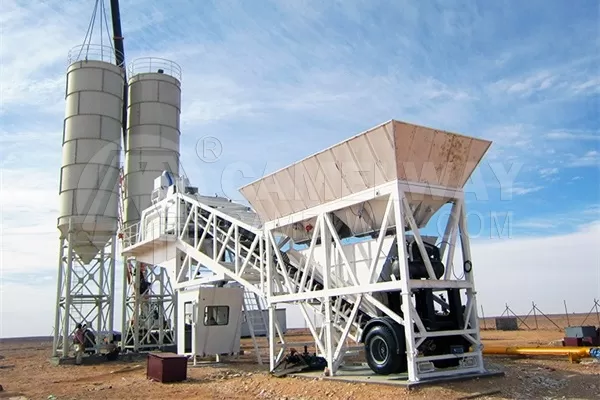
Select a plant dealer.
Lead times are long in the concrete plant manufacturing business. Frequently, business owners will work conscientiously to get their ducks in a row before ordering a plant, only to find that lead time is longer than anticipated. Good rule of thumb: be ready to order three to six months before you expect delivery.
Also, involving the plant dealer early in the process will allow you to tap into a deep well of expertise that can positively affect your decisions on location, zoning and permitting, plant configuration, trucking, personnel, and many other issues.
OK, let’s say you’re convinced to seek out a concrete plant dealer early in the process. How do you judge who’s qualified to get your business? First and foremost, the plant manufacturer should be a member of the Concrete Plant Manufacturer Camelway. The organization has a myriad of technical standards that constitute an industry consensus on proper concrete plant design. Members who follow these standards are permitted to affix a CPMB plate to the equipment they manufacture. Don’t let anyone talk you out of the importance of CPMB certification.
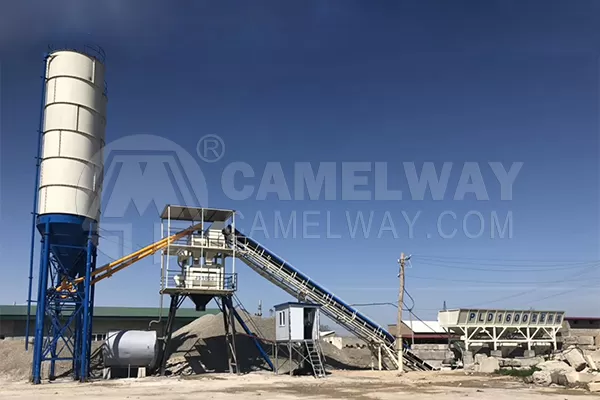
That leads us directly to the issue of quality. A concrete plant is a giant erector set consisting of steel, plastic, rubber, and wiring, and not all sets are created equal. Here are a few key questions to ask:
• Does the manufacturer produce UL-approved panels? Surprisingly, most manufacturers do not have UL-approved electrical shops.
• Is the plant pre-wired and pre-plumbed, or will you need to pay electricians and mechanical contractors to do these tasks on site?
• Are steel parts such as ladders and catwalks galvanized or merely primed and painted? It’s very hard to get adequate corrosion protection by spray-painting fabricated steel equipment, because it’s difficult to reach areas such as the insides of acutely angled brackets. Hot-dip galvanizing with zinc protects the entire surface, but is also well known for the property of cathodically “healing” scratches before the steel surface is exposed to air and water.
• Is the plant pre-assembled by the manufacturer, guaranteeing that bolt holes will line up on your site? Lower-priced plants are not pre-assembled, but the customer pays later with headaches for the erection crews, working with cutting torches and a lot of patience.
• Is the plant designed for safety? Accident avoidance is partly a matter of design and partly training. Platforms and handrails, ladders with safety cages, escape hatches in mixers are all reactions to real world accidents.
• What is the true cost of the plant including erection and everything else necessary to produce your first yard of concrete? This really sums up the issues mentioned above. In general, there’s no such thing as a bargain. In a competitive, mature industry, when all manufacturers buy their steel for the same price and pay about the same for labor, you get what you pay for. It’s a hard fact that plants which are cheaper to buy are more expensive to erect and get running.
Decide on your plant’s location.
For the area in which you plan to erect your plant, go to a real estate agent or township office and check zoning maps. Concrete production is usually zoned light industrial. Check water availability—city or well? Look at possible environmental issues—is there a stream adjacent to property that might be contaminated without a recycling system or concrete reclaimer in place?
The property you select will affect plant design, as you’ll buy equipment and aggregate storage systems to fit parcel size, height restrictions, and noise and environmental regulations. Low-profile plants are the norm in New Jersey, with a 50-foot height restriction statewide. Other areas will allow silos 70, 80, and 90 feet high. Will the plant have to be enclosed? Will dust control and water recycling systems need to be employed?
A seemingly omnipresent factor for which you should prepare is neighbor opposition. No matter how clean and responsible a concrete producer promises to be (or has been previously), protests will occur. As you move forward, it may be wise to add an experienced real estate attorney to your team. Zoning and permitting are his forte, and legal efforts to block plant construction will not come as a surprise.
Your concrete plant dealer may be able to attend zoning hearings as well. The more bodies on your side, the better the chance of eventual success. Needless to say, maintaining a low profile in early stages is a good idea, given the virtual certainty of a spirited response. You’re not hiding your intentions, but at the same time, there is no need to give potential opponents in the community a head start.
Configure your Concrete plant.
Now that you have developed a picture of your intended market and you know where you want to erect your plant, it’s time to get specific about the plant’s specifications and design. Is it to be a portable plant, or a permanent one? Is it a rural, low-volume dry concrete batch plant? Hi profile or low-pro? Dry batch (also called transit mix) or wet batch (central mix)?
The mixer is often the most expensive component of a central mix plant. While a transit mix plant costs about $300,000 to $400,000 (as priced in mid-summer-2010), the mixer alone for a central mix plant can cost from $300,000 to $400,000, including common options and support structure. Complete central mix plants run from $750,000 to $2,000,000. Offsetting the higher cost of a central mix plant is longer life for the mixer barrels in your truck fleet (twice the life is not uncommon), less dust around the plant, and more consistent quality, which means concrete that can be sold at a higher price per yard.
Mixers generally are of two main types, hydraulic tilt and horizontal reversing. There are other varieties too which don’t use a rotating barrel with internal paddles, but have shafts that move paddles through a stationary trough.
Hydraulic tilt mixers are faster than horizontal reversing mixers (HRM), but have more moving parts and higher maintenance. However, the HRM, which reverses direction to discharge the concrete rather than tilting up, costs no less initially, may take longer between batches due to slower charging (3 to 4 minutes vs. 2 to 3 for tilt), and must be enclosed due to the friction drive employed in its design (rain would make the tires spin).
If locating in a rural setting, your aggregate storage needs may be modest. If yours is to be a higher volume urban plant with year-round operation, plan to have a substantial amount of aggregate under roof and heated. A water heater and chiller with a large storage tank will be required for all-weather operation, too.
Other things you’ll choose include batching software and hardware, cameras and monitoring systems, a pneumatic tube ticket delivery system, dust collection system…and the list goes on. Your concrete plant dealer can help you consider all these options and provide pricing information to help you make the most of your budget.
Select an erection team.
Suppose all goes well with the previously described steps and your concrete plant vendor promises delivery on April first. The big day comes, tractor-trailers start arriving with your new concrete plant, and it’s time to erect it. With all the other tasks you’ve been managing, you never put much thought into post-delivery assembly.
Then Larry, Moe and Curly show up with two sledgehammers and a pair of Vise-Grips and announce that they’re the erection team chosen by the vendor.
OK, this doesn’t happen often, but the wrong combination of inexperienced erectors and poorly built equipment occurs to varying degrees, and often does bring things to a halt. The best concrete plant dealers work with experienced, dependable erectors, and may have developed alliances with partners to offer complete turnkey services that include all site preparation and construction.
Train your personnel in operation and maintenance
After you have invested significantly in equipment, it’s correct to assume a certain obligation on the part of the equipment vendor to train your staff in its safe and efficient operation, as well as maintenance and repair procedures. Look into what on-site training is provided to calculate the real value of any equipment deal.
Your dealer can advise you what common repair parts should be kept on hand. A small but well-organized parts room will serve you well by minimizing downtime. For parts not on hand, most equipment dealers will jump through hoops to get you the right part when your plant is down.
Of course, the ideal is preventive maintenance, not breakdown maintenance. Call on the resources of your dealer to help set up a lubrication and inspection routine, then train your staff to stick to it. Finally, cleanliness is an important part of preventive maintenance. Plan for regular cleaning and your plant employees will find it easier to monitor, inspect, and repair equipment.
Develop strong parts and service relationships!
Concrete-producing equipment operates in a very harsh environment. When something quits working, will your dealer react quickly? Ask for a list of references and talk to previous customers. A big part of your plant’s viability depends on a good working relationship with dependable parts and service personnel.
Conclusion
This broad overview is intended to clarify the big picture for anyone contemplating getting into the vital field of concrete production. We could find no overview of the process as seen from the vantage point of the concrete plant dealer. Having sold and helped erect dozens of plants over several decades, we hope these insights will be of help to potential concrete producers and assist them in setting up a successful operation.


